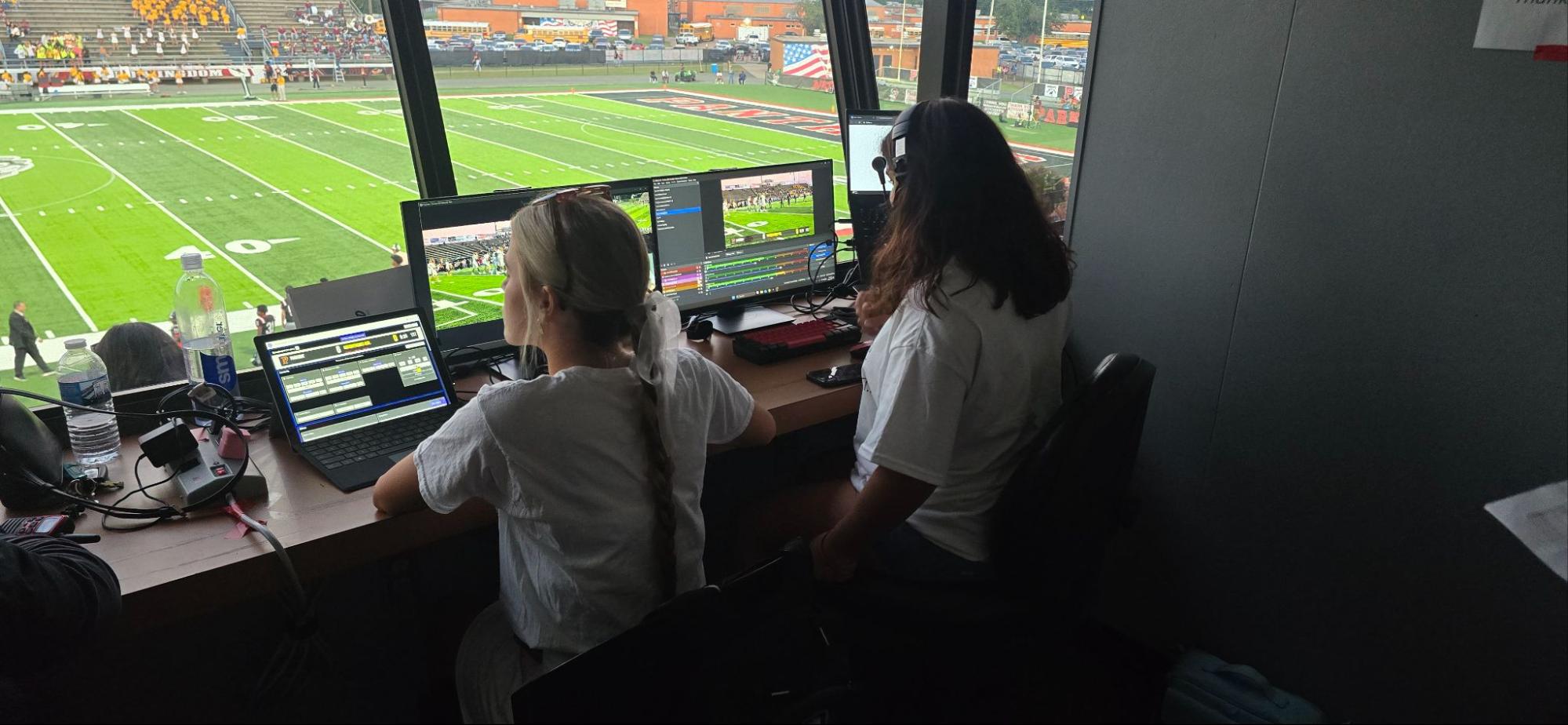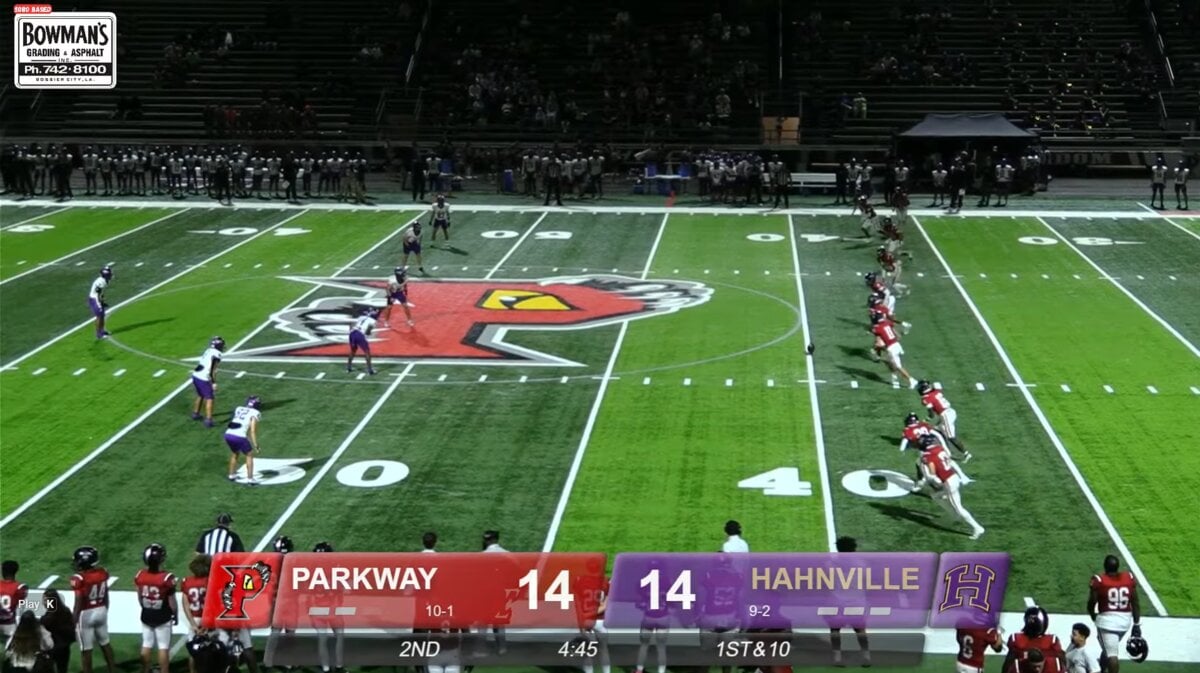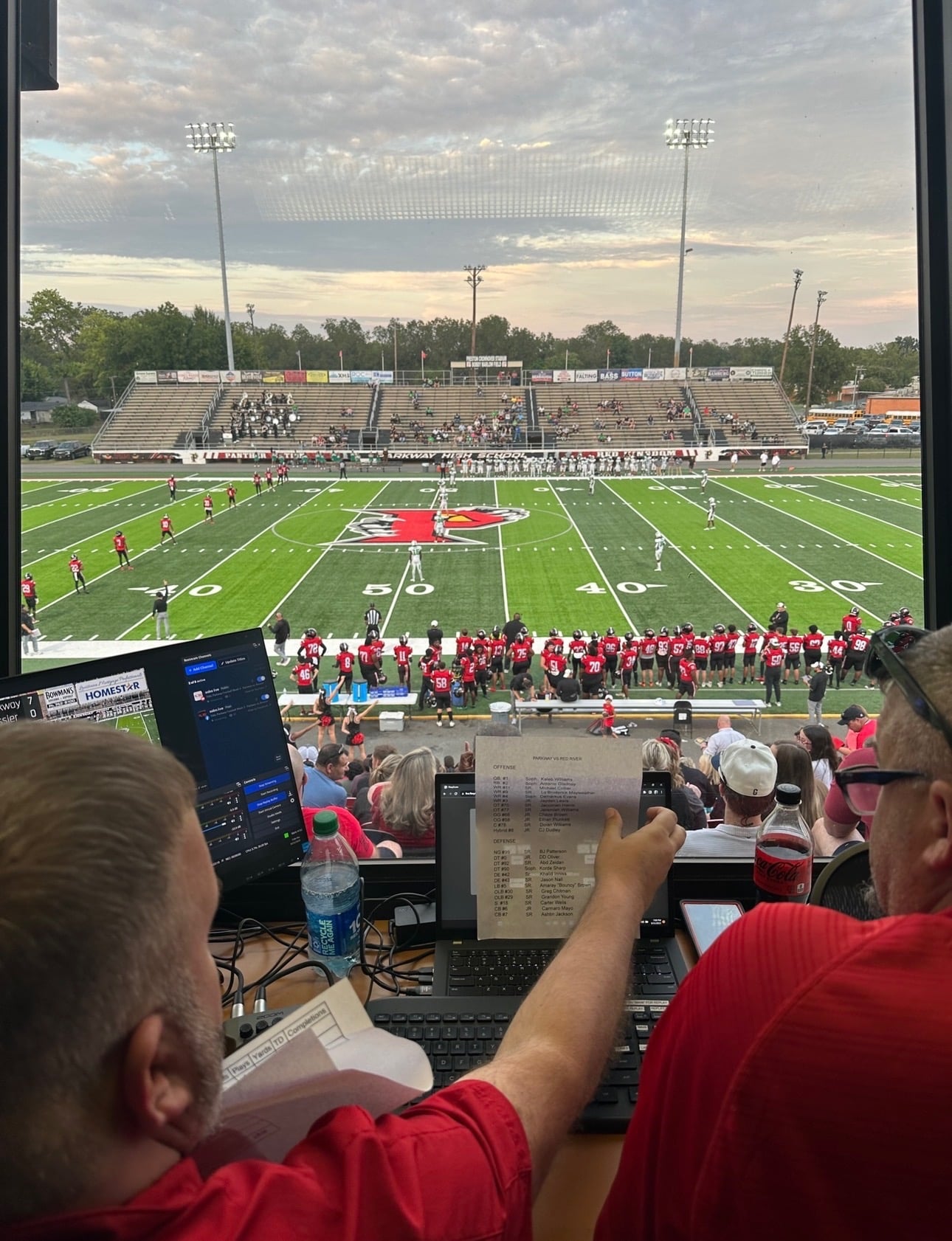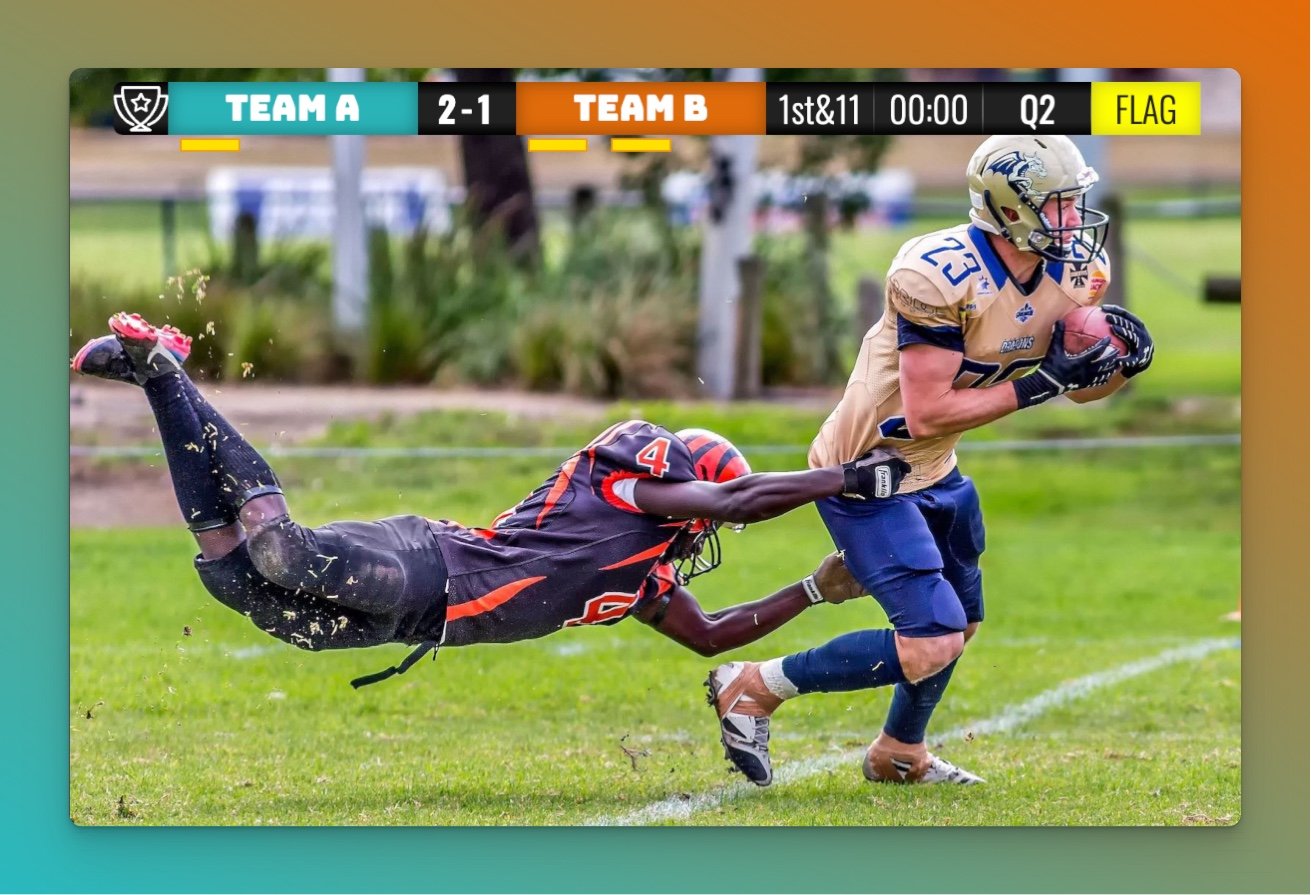The Challenge: Keeping Military Families Connected to Their Community

In South Bossier, a tight-knit community of 30,000 people just outside Shreveport, Louisiana, high school sports are more than entertainment—they're the heartbeat of community identity. For Wes, a technology sales executive at Howard Technology and proud alumnus of Parkway High School, watching games from the stands wasn't enough. Not when parents were deployed overseas. Not when grandparents were out of state. Not when families spread across the world wanted to watch their kids play.
"We're a big military community. There's a big military base here locally. And at any given year, one or two parents are deployed or they got family that's spread out all over. So we have a lot of people watching these games from all over the world."
— Wes, sobo.live Founder
Three years ago, someone at a game asked Wes a simple question: "Hey, can you go live on Facebook so I can watch some of the game?" He held up his phone and clicked "Go Live" from the stands. That moment planted a seed.
The challenge was clear: create professional-quality live broadcasts of high school sports with zero broadcasting experience, a volunteer team, and a budget funded entirely by small-town advertisers.
Finding the Right Solution: The Frustrating Search for a Score Bug
Wes dove into research mode. With no background in broadcasting, he had to learn everything from scratch: what overlays were, how streaming software worked, which cameras to use, and crucially—how to display live scores professionally.
"I didn't even know what an overlay was called. I was like, 'How do I put graphics on my video?'"
— Wes
After settling on OBS (Open Broadcaster Software) as his production platform, he needed a score bug—the graphics overlay showing teams, scores, and game time. He tried four or five different solutions over the first year. The experience was deeply frustrating.
The problems with FlexyScore (their first paid solution):
"The timer was absolutely terrible. It used a really weird HTML timer function that always malfunctioned. It never stopped and started correctly, and it would reset all the time."
— Wes on FlexyScore's timer issues
Beyond the timer problems, the solution had other critical flaws:
- Not customizable: Required advanced web development and CSS skills to incorporate custom graphics
- Basic appearance: Looked generic and unprofessional
- Wrong sport focus: Built for European soccer, not American basketball and football
At one point, the timer was so unreliable that Wes pointed a camera at the stadium's physical scoreboard and cropped just the timer into his stream. "I thought that always looked hinky. I never really liked that."
Despite paying for an annual subscription, Wes kept searching. The breaking point came in February 2024, right before the state basketball finals.
The Discovery: A Championship Game Changes Everything
Parkway High School reached the Louisiana state basketball championship—a huge moment for the small community. But there was a problem: NFHS Network held exclusive video rights to championship games. Wes could only broadcast audio with graphics.
"I started to search for something that had a better graphical interface because I knew I was still going to do YouTube and Facebook. Instead of having the camera feed, it would just be a big scoreboard, and then you would hear us talking over it."
That's when he found KeepTheScore.
"I probably found it and had it all set up two days before the championship game. And I knew, I was like, 'Okay, we're going to use this forever. This is awesome. This is way better.'"
— Wes
The audio-only broadcast with a full-screen KeepTheScore basketball scoreboard, team logos, and advertisements became their highest-viewed production to date: 700 concurrent viewers for a game with no video—just commentary and a scoreboard.
 The Scorebug that started it all: Sobo.live's first use of the KeepTheScore program for accurate, impressive on-screen graphics.
The Scorebug that started it all: Sobo.live's first use of the KeepTheScore program for accurate, impressive on-screen graphics.
"Everyone liked the big interface," Wes says. "And I thought it was interesting that nobody was complaining about there's no video and for $10 they could watch it somewhere else."
The Implementation: Building a Professional Production with Volunteers
The Setup:
Today, sobo.live runs a sophisticated multi-camera production with eight people in the booth for football games:
- Three camera operators (students from the school)
- Two sportscasters (local real estate agents with great color commentary)
- One spotter (relays player names and numbers to announcers)
- One scorekeeper (operates the KeepTheScore control panel)
- Producer (Wes, managing cameras, overlays, and final output in OBS)
 Sobo.live has set up at all kinds of venues, like this one, where they setup outside a cramped press box for an away game.
Sobo.live has set up at all kinds of venues, like this one, where they setup outside a cramped press box for an away game.
The Equipment:
The entire production is mobile and battery-operated:
- Cameras: One wired Canon XA11 camcorder and Samsung Galaxy S24/S23 phones with NDI wireless streaming
- Multiple angles: Sideline, end zone, top-down, booth cam (4-5 cameras for football)
- Monitors: For sportscasters
- Everything packs into three bags
"We can pack up the entire production studio and cameras in really three big bags," Wes explains. "The biggest bags are the monitors for the sportscasters. But everything now is mostly high-end camera phones."
The camera phone approach delivers broadcast quality at a fraction of the cost: "You get a really good mobile camera out of these high-end cell phones versus some of these 4K camcorders—you can spend two or three times as much as a phone, but you get half of the utility."
 In 2025, Sobo.live partnered with the high school to give seniors in the student news program real-world broadcast experience: producing the front-end and camera work for their broadcasts.
In 2025, Sobo.live partnered with the high school to give seniors in the student news program real-world broadcast experience: producing the front-end and camera work for their broadcasts.
 Sobo.live's current scorebug for football.
Sobo.live's current scorebug for football.
The Scoreboard Setup:
Wes integrated KeepTheScore into a custom graphical "shell" in OBS:
- Team logos prominently displayed
- Customized colors matching Parkway High School
- Built-in animations (like the "+3" flourish when someone scores a three-pointer)
- Ad placement zones around the scoreboard
- Animated advertiser graphics triggered alongside scoring plays
"I have different onscreen graphics already. For example, for one sport, it almost looks like a sign and then the score bug fits inside of it. And on the outside of the sign, that's where the ads will go or we do player pop-ups."
The Results: Connecting a Global Community
Viewership
- Football games: 500-2000 concurrent viewers during close games
- Basketball games: 100-300 concurrent viewers
- Championship game: 700 concurrent viewers (audio + scoreboard only)
Geographic Reach
The interactive nature of YouTube and Facebook comments reveals the broadcast's reach. The sportscasters read and respond to comments in real-time:
"They'll ask, 'Where's everybody watching from?' And over the years, you recognize a lot of the commenters. But a lot of people are like, 'Hey, I'm with the grandkids on vacation. We're in Colorado.' Or, 'I'm actually in Germany.' We've had a guy stationed in Japan watching their kids."

The Most Meaningful Moments
For Wes and the team, the statistics matter less than the stories. One stands out:
"One of the lads who got to the finals—his granddad's really not well at all. His granddad's not been able to watch him play all year because he can't leave the house. But we were able to share a link with him, and he managed to watch his grandson win."
— Wes
Business Model
The operation is entirely self-funded through local advertising:
- 5-6 regular advertisers (year-round)
- 5-10 one-off advertisers per game (political campaigns, special sponsors)
- Covers all costs and donates surplus back to the school's athletic program
In one game, they raised $3,500 for the athletic program using an on-screen fundraising thermometer—another KeepTheScore feature.
"All of us that are involved in this work, we all have pretty good full-time gigs. So it is a lot of passion," Wes explains. "We donate back to the school. They really like that. And that's another reason that they probably let us do stuff."
Advertiser Integration
Wes creates custom animated ads that interact with the scoreboard:
- Asphalt contractor: Bulldozer drives across scoreboard, dragging the company logo
- Insurance company: Bricks build up after defensive plays with "Protect your house" message
- Three-point sponsors: Ads triggered when players make three-pointers
Why It Works for Community Sports Broadcasting
Starting from Zero
Wes had zero broadcasting experience when he started in 2022. His day job in technology taught him to value professional presentation, but he learned everything else through trial and error:
"I had no background in any type of broadcasting or production or live sports. With that first season, it was really just putting a camera on the game and clicking go live. And then it just grew from there."
The Pride Factor
Despite being a volunteer operation serving a small community, Wes insists on professional quality:
"I just have a lot of pride in my work. I just want it to look good. I have a lot of tools in my garage that I paid for that I use once a year. So it's like you just pay to have it and use it whenever it's ready."
— Wes on professional standards
The professional appearance has practical benefits: "I've tricked a lot of people into thinking we're a professional organization by the way our scoreboard looks."
Permission and Partnership
Getting school permission was surprisingly easy. Wes graduated with the principal of Parkway High School, but the professional quality of the broadcasts opened doors at away games:
"Nobody's ever told us no. For the area, everybody knows who we are and it's usually pretty cool. Most of them when we ask, they go out of their way. I mean, they set us up in the press box, they ask what we need, they'll run cables for us. They're very accommodating."
The Tight-Knit Community
South Bossier is a small community within a 300,000-person metro area. Everyone goes to the same high school. That creates powerful community bonds:
"If I don't know somebody, but a friend of mine is like, 'Hey, that's such and such. He's a Sobo guy,' that's what we call our community, Sobo, South Bossier. 'He graduated in '91.' I was like, 'Oh, okay.' So I might not know him because he graduated 10 years before me, but automatically in our community that's like, 'Hey, you can trust this guy. You can do business with this guy. He's a Sobo guy. He's a good dude.'"
— Wes on South Bossier community identity
Key Takeaways
Critical Success Factors
- Zero technical background required: Wes learned broadcasting from scratch through research and trial-and-error
- Mobile-first production: High-end smartphones deliver broadcast quality at a fraction of professional camera costs
- Reliable scoreboard is non-negotiable: Timer functionality failures ruined previous solutions
- Professional appearance builds credibility: Quality graphics opened doors at away games and attracted advertisers
- Local advertising funds operations: Small-town sponsors cover costs while supporting school athletic programs
Technical Implementation Insights
- OBS browser source integration enables custom graphic shells around scoreboards
- Built-in animations (goal celebrations, scoring flourishes) eliminate need for custom development
- Simple control panels enable volunteer scorekeepers with zero training
- Fast setup (two days from discovery to championship broadcast) proves intuitive design value
- Mobile production setup (three bags) enables away game coverage
Looking Forward
Wes and the sobo.live team are considering expansion. A local arena football team and hockey team have reached out about producing their broadcasts. But any growth would be carefully considered:
"Scaling it to a broader market could be the future. I don't know. It might not be. We might just do what we do forever."
For now, the focus remains on what matters: keeping the South Bossier community connected, one game at a time. Whether families are watching from Germany, Japan, Colorado, or their living rooms in Shreveport, sobo.live ensures nobody misses the action.
As Wes puts it: "I absolutely love the tool. It's brilliant, and it really, really helped us. It was fantastic."
Ready to start broadcasting your community's sports? Get started with KeepTheScore for free and bring professional-quality scoreboards to your live streams.


